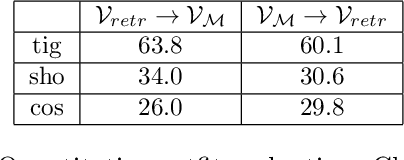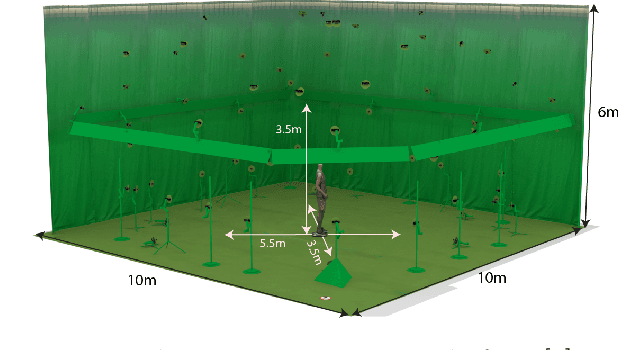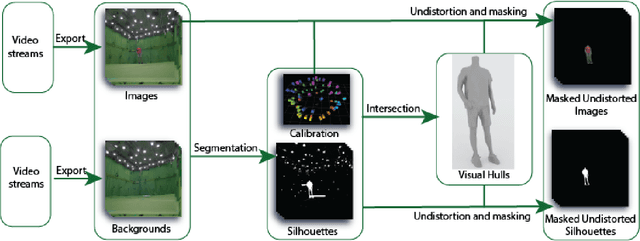Laurence Boissieux
D-Garment: Physics-Conditioned Latent Diffusion for Dynamic Garment Deformations
Apr 04, 2025Abstract:Adjusting and deforming 3D garments to body shapes, body motion, and cloth material is an important problem in virtual and augmented reality. Applications are numerous, ranging from virtual change rooms to the entertainment and gaming industry. This problem is challenging as garment dynamics influence geometric details such as wrinkling patterns, which depend on physical input including the wearer's body shape and motion, as well as cloth material features. Existing work studies learning-based modeling techniques to generate garment deformations from example data, and physics-inspired simulators to generate realistic garment dynamics. We propose here a learning-based approach trained on data generated with a physics-based simulator. Compared to prior work, our 3D generative model learns garment deformations for loose cloth geometry, especially for large deformations and dynamic wrinkles driven by body motion and cloth material. Furthermore, the model can be efficiently fitted to observations captured using vision sensors. We propose to leverage the capability of diffusion models to learn fine-scale detail: we model the 3D garment in a 2D parameter space, and learn a latent diffusion model using this representation independent from the mesh resolution. This allows to condition global and local geometric information with body and material information. We quantitatively and qualitatively evaluate our method on both simulated data and data captured with a multi-view acquisition platform. Compared to strong baselines, our method is more accurate in terms of Chamfer distance.
4DHumanOutfit: a multi-subject 4D dataset of human motion sequences in varying outfits exhibiting large displacements
Jun 12, 2023



Abstract:This work presents 4DHumanOutfit, a new dataset of densely sampled spatio-temporal 4D human motion data of different actors, outfits and motions. The dataset is designed to contain different actors wearing different outfits while performing different motions in each outfit. In this way, the dataset can be seen as a cube of data containing 4D motion sequences along 3 axes with identity, outfit and motion. This rich dataset has numerous potential applications for the processing and creation of digital humans, e.g. augmented reality, avatar creation and virtual try on. 4DHumanOutfit is released for research purposes at https://kinovis.inria.fr/4dhumanoutfit/. In addition to image data and 4D reconstructions, the dataset includes reference solutions for each axis. We present independent baselines along each axis that demonstrate the value of these reference solutions for evaluation tasks.
 Add to Chrome
Add to Chrome Add to Firefox
Add to Firefox Add to Edge
Add to Edge